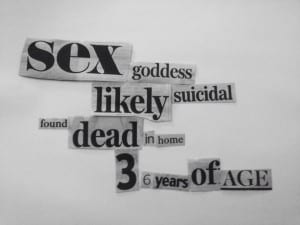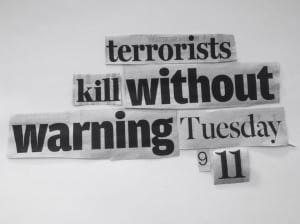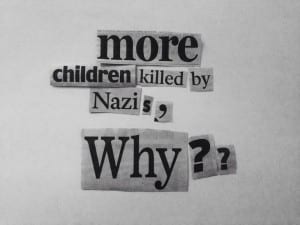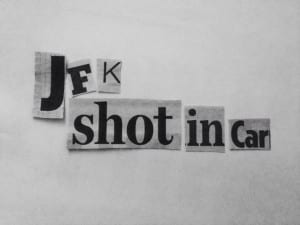Jake Allsop
Changes
Another recent change in our Multimedia performance piece has led us away from our initial ideas of dark thoughts and a dystopian future to a piece that includes exploring key moments in human history. While we had certainly made great headway with these ideas that challenged society in a modern and futuristic context, and even though some of our group members may be frustrated that their work on these ideas may no longer be used, a piece that acknowledges where we come from and the events that shape where we are now is just as important as discussing our present and our future.
In our most recent meeting we made a list of important moments that we felt we could explore with technology on stage and make an intriguing multimedia performance. In pairs, we thought up historical events and my partner and I thought of the Moon Landing and what impact social media would have had if the internet was around for these moments.
http://www.cracked.com/photoplasty_330_15-important-moments-in-history-if-social-media-was-around/
In the end the social media angle was abandoned due to the notion of it being a weak focus point, despite my personal feeling that it was an interesting concept that might have led to creative input from other group members.
Within the finalized list there were events such as 9/11, the Moon Landing and the JFK assassination, and from the list we were given the choice of which examples to explore and think of ways we could bring those examples to the stage in an exciting and engaging way. I wanted to work on the Moon Landing as me and my partner found it interesting and so I was assigned to research the facts surrounding the Moon Landing while my partner looked into the conspiracy theories surrounding the event. However there was another example on the list that piqued my interest; that of the Jonestown Massacre and consequently the Westboro Baptist Church. This stirred something in me and I thought of a filmmaker that I deeply admire, Kevin Smith, and a movie that he made called Red State that was directly inspired by the actions of the Westboro Baptist Church. Because of this, I wanted to explore what effect these events have on society and how they have shaped who we are today.
Hate and Prejudice
The Westboro Baptist Church, organised by the Phelps family, are an extreme anti-homosexual hate group that carry out protests against the gay community, going so far as to protest gay weddings and even funerals for gay people.
http://www.ranker.com/list/7-craziest-westboro-baptist-church-protests-ever/melody-yan
As Kevin Smith noted in his Q&A “Kevin Smith: Burn In Hell” he wanted to make a movie about how far this group could go in their tirade against homosexuals by eventually supplying the dead bodies that they protest at funerals. This infuriated the Phelps family and so they began to protest the movie, labelling Smith as a “Fag Enabler.” To combat this, Smith took note from a cosplayer at a comic convention that the Church was protesting. As one of the members of the Westboro Baptist Church held up a sign that read “God Hates Fags” a man dressed as the robot Bender from “Futurama” held up a sign that read “Down with Humans”, so following on from this idea of fighting ridiculousness with ridiculousness Smith and his friends made their own picket signs to retaliate in a humorous way such as “God Hates Homework” and “Dick Tastes Yummy”. I think it would be entertaining to fill the stage with signs that support the Westboro Baptist Church’s views and hilarious signs like Smiths that show how people can abuse their right to free speech in an attempt to inflict pain and misery upon others, and how other people can use good natured humour and light heartedness to combat these types of actions. From a technical standpoint we can use live cameras on these signs to better show the audiences what is being presented on stage, while from a pre-recorded standpoint we could play clips from interviews with the Phelps’s demonstrating their views as well as the opinions of people who disagree with the Phelps’s viewpoints.
Cult of Violence
Leading on from this is an even that took place on November 18th 1978, known as the Jonestown Massacre. In 1956, Jim Jones founded the People Temple in Indianapolis. The Temple was a racial integrated church, focusing on [people in need. In 1966, they moved to Redwood Valley, California. Jones’s vision was a communist community. In 1977, Jones established Jonestown agricultural settlement with approximately 50 inhabitants, but not Jones. An expose article which Jones heard word that it was to be published, which unsettled him because it contained interviews form ex members of the Church. The night before publication, Jones and several hundred followers flew to Guyana and into the Jonestown compound.
1100 men, women and children were Jonestown inhabitants. Jones implemented strict regulations regarding isolation and contact with non-members of the People’s Temple. Jonestown was meant to be a Utopia, but it had armed guards, not enough cabins, bunk beds and overcrowding and each cabin was segregated by gender so families were split apart. And due to overcrowding, heat and humidity grew to sick members. Jones had forced labour, 11 hours a day and the inhabitants were never allowed to leave. On top of this, Jones had constant speeches on loud speakers even at night.
Congressmen Leo Ryan, his advisor, an NBC film crew and concerned relatives investigated Jonestown on November 17th 1978. All was fine till the evening when a note was secretly passed to a member of the NBC film crew that stated a list of names of people wanting to leave the compound, making apparent that people were being held against their will. On November 18th 1978, the Congressmen took 15 members to an airstrip along with the people that came with him, but the Congressmen stayed and waited for other people who wanted to leave. He was attacked and had his throat almost slit by members of the church so he quickly left. The truck containing the Congressman and the others arrived at the airstrip safely but the planes weren’t ready. Then a tractor and a trailer of Church members pulled up and opened fire on the group. 5 died including the Congressman and the cameraman, others were severely wounded. At the same time in Jonestown, Jones made a speech despite being panicked and agitated. He talked about the attack on the group, resulting in the town not being safe anymore;
“When they start parachuting out of the air, they’ll shoot some of our innocent babies.” Jim Jones
“Revolutionary act” (Jim Jones) of suicide
“If these people land out here, they’ll torture some of our children here. They’ll torture our people, they’ll torture our seniors. We cannot have this.” Jim Jones
https://www.youtube.com/watch?v=jpWr45bKWpE
Jones told his followers to drink Grape flavoured Flavour-Aid, which was in fact a concoction of cyanide and valium. With no choice, babies and children went first. Mothers and nurses used syringes to pour the juice into their mouths. Then the Mothers, the other members drank the poison. Most were already dead when others were in line to drink the juice. Some did as bayed in the name of “the Father” Jim Jones. If anyone refused they were forced to drink, injected, shot or strangled to death. It took them 5 minutes to die. 912 people died from drinking the poison, 276 of whom were children. Plus the 5 from the airstrip, the last was Jones himself, who died from a single shot to the head. It is unknown whether it was self inflicted. 918 was the total death count.
http://history1900s.about.com/od/1970s/p/jonestown.htm
A way that a piece can be made from this moment is we as a group can re-enact the events that lead to the mass suicide, using 3 visual perspectives. One is the audience viewing the stage; the 2 others would be screens. A live camera feed would be used to simulate the NBC camera viewpoint. The other would be pre-recorded footage from the actual event, with quotes from Jim Jones and news coverage.
Moonwalking
The other important moment from history that interested me was, of course, the 1969 Moon Landing. This was a milestone in the history of human space travel, particularly for America, as they landed on the moon before Russia, thus winning the alleged “Space Race” against the Soviet Union during the Cold War. Since I was tasked with listing the facts of the event as opposed to the conspiracy theories that attempt to disprove it, these are the points that I felt were the most vital:
- The shuttle that took the astronauts to the moon was the “Saturn V” and was the tallest and heaviest ever built.
- Neil Armstrong’s “That’s one small step for man, one giant leap for mankind” quote was actually spoken incorrectly, he was actually meant to say; “That’s one small step for a man, one giant leap for mankind”.
- Buzz Aldrin is a strict Presbyterian Christian so he took a mini communion kit without NASA knowing meaning the first drink the astronauts had was wine.
- Collins was the module pilot so he had to stay in the orbiting Columbia craft while Aldrin and Armstrong took the lunar module to the moon’s surface.
- According to Aldrin and Armstrong, when they removed their spacesuits they could smell and taste the moon dust from their clothing. They described it as ‘spent gunpowder’ and ‘wet ashes’.
- The moon landing had an estimated 600 million television viewers.
- NASA had to hold a council discuss the political implications of putting the American flag on the moon, considering nobody actually owns the Moon. In the end they did, perhaps as a signal of power to the Soviet Union, the biggest rivals to the Americans in the space race.
- In the case of the programme’s failure and the 3 astronauts lives’ lost, President Nixon had a speech prepared called “In Event of Disaster” which began: “fate has ordained that the men who went to the moon to explore in peace will stay to rest in peace”.
I obtained these facts from this link, that contains further information on these points as well as others on the moon landing; http://www.news.com.au/technology/science/facts-you-should-know-about-the-apollo-11-moon-landing/story-fnjwlcze-1226995022345
There are many sound and video extracts that would be useful for a performance piece showcasing the Moon Landing, such as Neil Armstrong’s famous words, TV news report footage and footage of the Astronauts on the moon. While this can be shown as pre-recorded footage on screens, live bodies could be demonstrating the difficulties behind the scenes of the mission, through dance or actions without words. We could also do a live split screen, where on one side it is as though the mission actually took place on the moon, whereas on the other side it is set up like a film set, encouraging the idea that the event was indeed staged. These can all be utilised to express the importance of this event in history.




